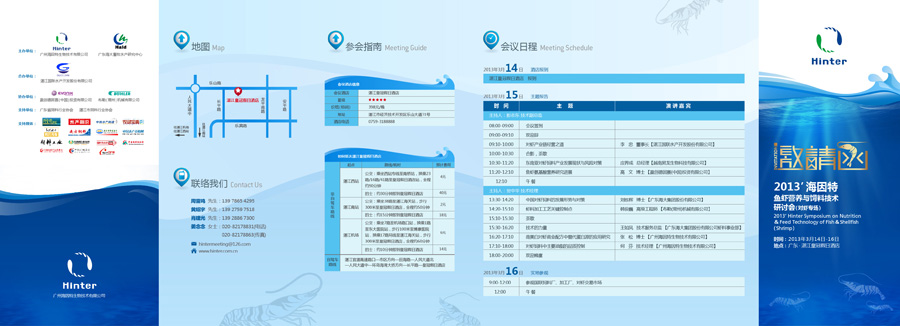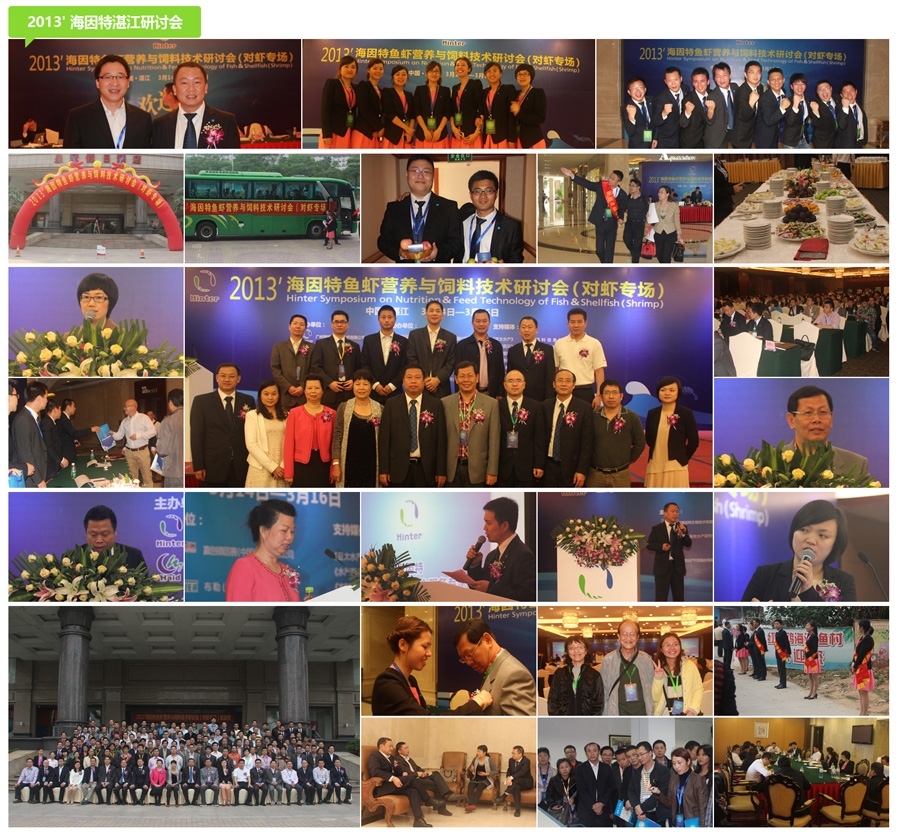2013' Hinter Symposium on Nutrition & Feed Technology of Fish and Shrimp
Hinter Symposium on Nutrition & Feed Technology of Fish & Shellfish was organized by Guangzhou Hinter Biotechnology Co., Ltd and Guangdong Haid Animal Husbandry and Fisheries Research Center, which focus on the nutrition and feed technology of aquatic animals and was held every year. The special report highlights the outstanding technology, closes to practice, focus on the application, which is a good opportunity promote communication for the feed production enterprise.
Hinter symposium has been inherited the theme 'encouraging communication and promoting progress of the feed industry' and persisted on technology communication, which is not only a window of Hinter but also a sincere action of customer feedback. It has become an important platform for communication of aquaculture feed industry peers and highly praised by the peers, whose size and influence is expanding every year.
Hinter has held 26 symposia and shared 175 reports, which attracted more than 10000 industry friends to attend for consecutive 8 years since 2005.


2013’Hinter Zhanjiang Symposium
Meeting Time:March 14-16, 2008
Meeting Place:Guangdong Province
Meeting Iinvited:Invitation
Meeting Session:Highlights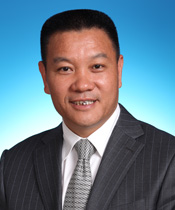
How to operate an efficient shrimp industry chain
Zhong Li 【Chairman of the Board of Zhanjiang Guolian Aquatic Products Co., Ltd.】
As a traditional industry, shrimp industry is a fast growing and most dynamic industries no matter in the world or in China. Today, many outstanding enterprises in this industry is not just concerned with one or a few aspects of shrimp industry, but concerned about the development of the shrimp industry chain in global height. In this report, Li Zhong, the Guolian chairman, will share his rich experience in how to operate an efficient shrimp industry chain. The excellent report cannot be missed.
Development status and risk countermeasures in the shrimp feed industry in Southeast Asian
Jie Cheng Chuang 【President of Sheng Long Bio-Tech International Co., Ltd, Vietnam】
Southeast Asia is the world's largest production zone of shrimp aquaculture. In 2012, the total output of seawater shrimp aquaculture is more than 1500000 tons. But in past two years, shrimp aquaculture industry has been faced with several serious problems and challenges, such as escalating prices of fishmeal, rising costs, homogeneous competition, environmental pollution, disease outbreaks, etc. How to deal with the risk in the development of the shrimp aquaculture industry so as to make the sustainable development of shrimp aquaculture industry? With rich experience for more than 10 years in this field, the lecturer will share his high perspicacity on Southeast Asian shrimp feed industry.

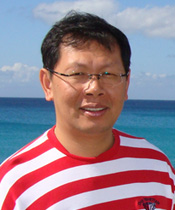
Recent research on amino acid nutrition of fish and shrimp
Dr. Wen Gao 【Evonik Degussa (China) Co., Ltd.】
The higher and higher demands of fish and shrimp feed is going with the rapid development of fish and shrimp farming. How to adjust the composition of amino acids in feeds so as to replace fishmeal and achieve the maximum feeding effects, which has become an important way to alleviate the cost pressure for enterprises. In this report, Dr. Gao will discuss the research progress on amino acids in fish and shrimp feed with you, which hope to provide a valuable reference to reduce costs and enhance market competitiveness.

The development situation and countermeasures of shrimp feed production in China
Dr. Donghui Liu 【Guangdong Haid Group Co., Ltd】
The deteriorating environment and heavy resistance of seed breeding resulted in the lower success rate of Penaeus vannamei culturing in China, which made shrimp feed enterprises be in hot water. Relying on the new progress of Haid Group and rich experience in this field, the lecturer will share the development strategy of shrimp feed in China from the Industry-Academy-Research aspect.
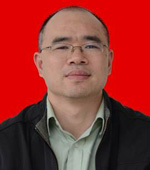

The key points of shrimp feed processing
Junwei Han 【Senior Engineer of Buhler (Changzhou) Machinery Co. Ltd.】
The increasing costs of shrimp farming is decreasing profit rate of farmers. Market competition of shrimp feed enterprise is increasingly fierce. Processing technology of shrimp feed is not only related to shrimp farming, but also crucial to survival of feed enterprises. The key points of shrimp feed processing technology has become the focus of the shrimp feed enterprises. Based on the senior industry background, the lecturer will make a detail report about how to grasp the key points of shrimp feed processing and how to make high quality shrimp feed which is favored by the market so as to enhance market competitiveness.

The power of technology in the shrimp feed industry
Rufeng Wang 【Technical director of Guangdong Haid Group Co., Ltd.】
In recent years, shrimp culture has been deeply affected by EMS diseases. Plus with low seeding survival rate, the lowest success rate of shrimp production and breeding, seedling degradation, environment deterioration and the rising breeding cost make the farmers feel unconfident and confused about the development prospects of shrimp culture. The lecturer will explore and exchange comments of shrimp culture by the analysis of success breeding case of high-end customers in the market, which hope to find the future direction of shrimp farming.
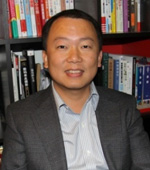
Applied research of protein source replacement in Penaeus vannamei commercial formulations
Dr. Song Zhang 【Vice-president of Guangzhou Hinter Biotechnology Co., Ltd.】
In recent years, the price of raw materials of shrimp feed has been increasing recently, which result in the high formulation cost and a great pressure to the shrimp feed enterprises. Research of alternative protein sources have been the hot topic in shrimp formulation technology. In this report, Dr. Song Zhang will show a series of important results of Haid Group in recent years and explore the practical formulation of Penaeus vannamei with you.
Quality control of oils used in shrimp feed
Fen He 【Technical manager of Guangzhou Hinter Biotechnology Co., Ltd.】
How to get the representative oil sample? Can detection of acid value and peroxide value control the fresh degree? Must the fatty acid of sample be submitted? What are the differences between different quality control methods and different fat? Are there any other simple and efficient methods or indexes for quality control? Combing rich experience in quality control of the raw material for many years with the quality control of oil theory, the lecture will explain how to make quality control of the main oils used in shrimp.



